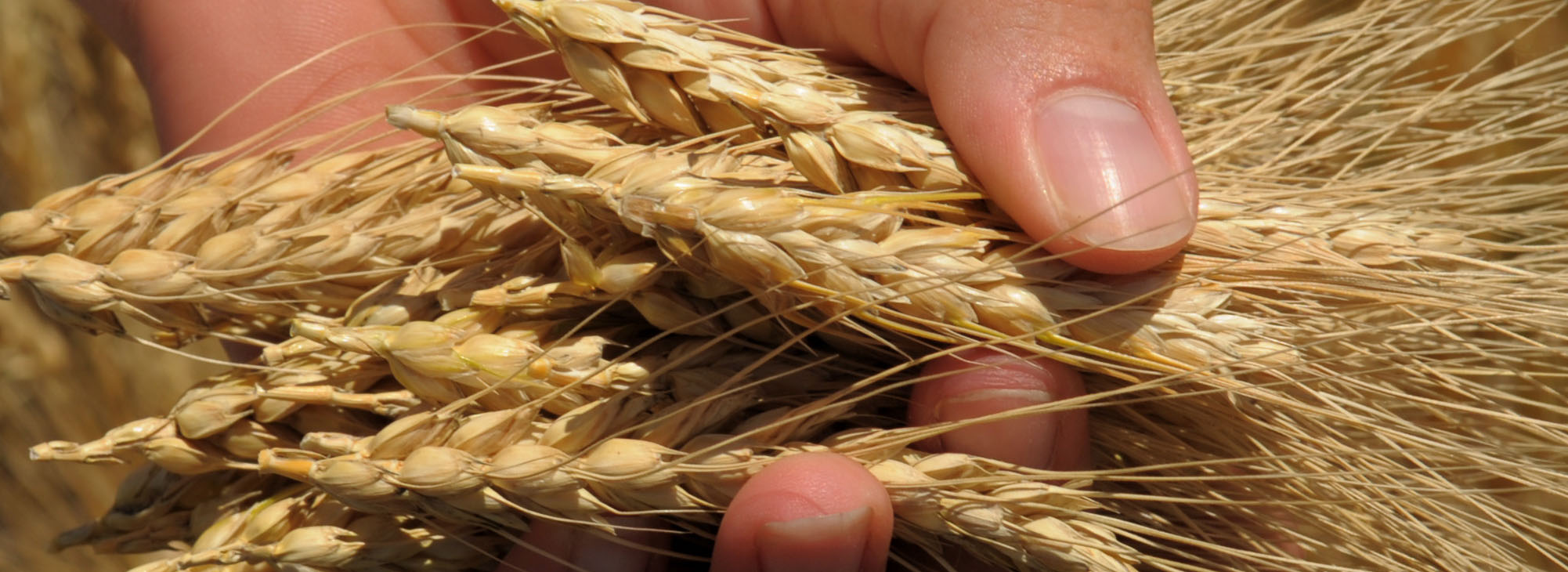
K-State wheat disease specialist Erick DeWolf says the number of wheat stripe rust reproductive cycles in a growing season determines the extent of the damage it inflicts on individual plants and crop yields. | Download photo
K-State researchers starting to investigate heat tolerant wheat stripe rust
K-State wheat disease specialist announces grant to help predict yield loss
At a glance: K-State wheat disease specialist Erick DeWolf said researchers have received a grant to evaluate heat-tolerant wheat stripe rust strains and develop a predictive model for yield loss.
More information: Erick DeWolf, 785-532-3968, dewolf1@ksu.edu
Related: 2024 Kansas Wheat Variety Guide | Wheat Stripe Rust
Sept. 5, 2024
By Jacob Klaudt, K-State Research and Extension news service
MANHATTAN, Kan. – Kansas State University wheat disease specialist Eric DeWolf said researchers have received a grant from the U.S. Department of Agriculture to evaluate and develop predictive models for the risk of yield losses brought on by heat-tolerant strains of wheat stripe rust.
“In the last 20 years, this fungus has quickly become our No. 1 wheat disease,” he said. “It is a major threat to crop production in this region, causing hundreds of millions of dollars every time we have a major stripe rust outbreak.”
According to DeWolf, stripe rust harms wheat plants by invading wheat leaves and establishing a fragile feeding process that “parasitizes” plant cells.
Listen to an interview by Jacob Klaudt with Erick DeWolf on the weekday radio podcast, Agriculture Today
High heat during the wheat growing season in the central Great Plains slows the growth and spread of stripe rust. DeWolf said this natural restriction has not occurred in the last couple of growing seasons.
“Many growers began noticing that this fungus is not being slowed by warm temperatures as much as in previous years,” he said. “We currently have a disease that has adapted to our environment and possesses the potential to cause a lot of damage.”
Beyond heat tolerance, those involved in wheat production also observed stripe rust starting to bypass the genetically resistant varieties of wheat specifically planted to control the disease.
“New strains of the fungus that were introduced to Kansas from other parts of the world are now able to overcome some of those sources of genetic resistance,” DeWolf said.
“Based on these observations – heightened heat tolerance and genetic resistance – researchers started to gather individual members of the current population and compare it to some historical ones.”
This collection of the modern wheat stripe rust pathogen has allowed DeWolf and his colleagues to begin evaluating the progression of the disease and how rapidly it recovers from heat stress.
“Part of this grant will try and characterize the ability of the fungus to tolerate heat,” he said. “We also want to answer questions like ‘Is this an adaptation of the fungus, or is this an outside occurrence from other parts of the world?’”
Another key objective of this grant includes creating a predictive model that will use analysis from machine learning to determine the probability of heat suppressing the development of stripe rust.
DeWolf said this real-time forecasting ability will allow producers to establish the extent of high temperature’s influence on future stripe rust upsurges.
“Practical application of this research will hopefully come through recommendations that flow out through (the statewide extension service) – things like Agronomy eUpdates, radio interviews and other avenues,” he said.
“It is all about trying to get the word out about when and where wheat stripe rust is potentially emerging as a threat to Kansas growers.”
The model will incorporate data sets from “the observations of replicated research plots and regional disease loss estimates collected between 2000 - 2023.”
Until researchers fully develop their predictive tool, DeWolf recommends wheat producers scout for stripe rust from April to June and apply foliar fungicides upon detection to keep the disease at bay if needed.
***

K‑State Research and Extension is a short name for the Kansas State University Agricultural Experiment Station and Cooperative Extension Service, a program designed to generate and distribute useful knowledge for the well‑being of Kansans. Supported by county, state, federal and private funds, the program has county extension offices, experiment fields, area extension offices and regional research centers statewide. Its headquarters is on the K‑State campus in Manhattan. For more information, visit www.ksre.ksu.edu. K-State Research and Extension is an equal opportunity provider and employer.